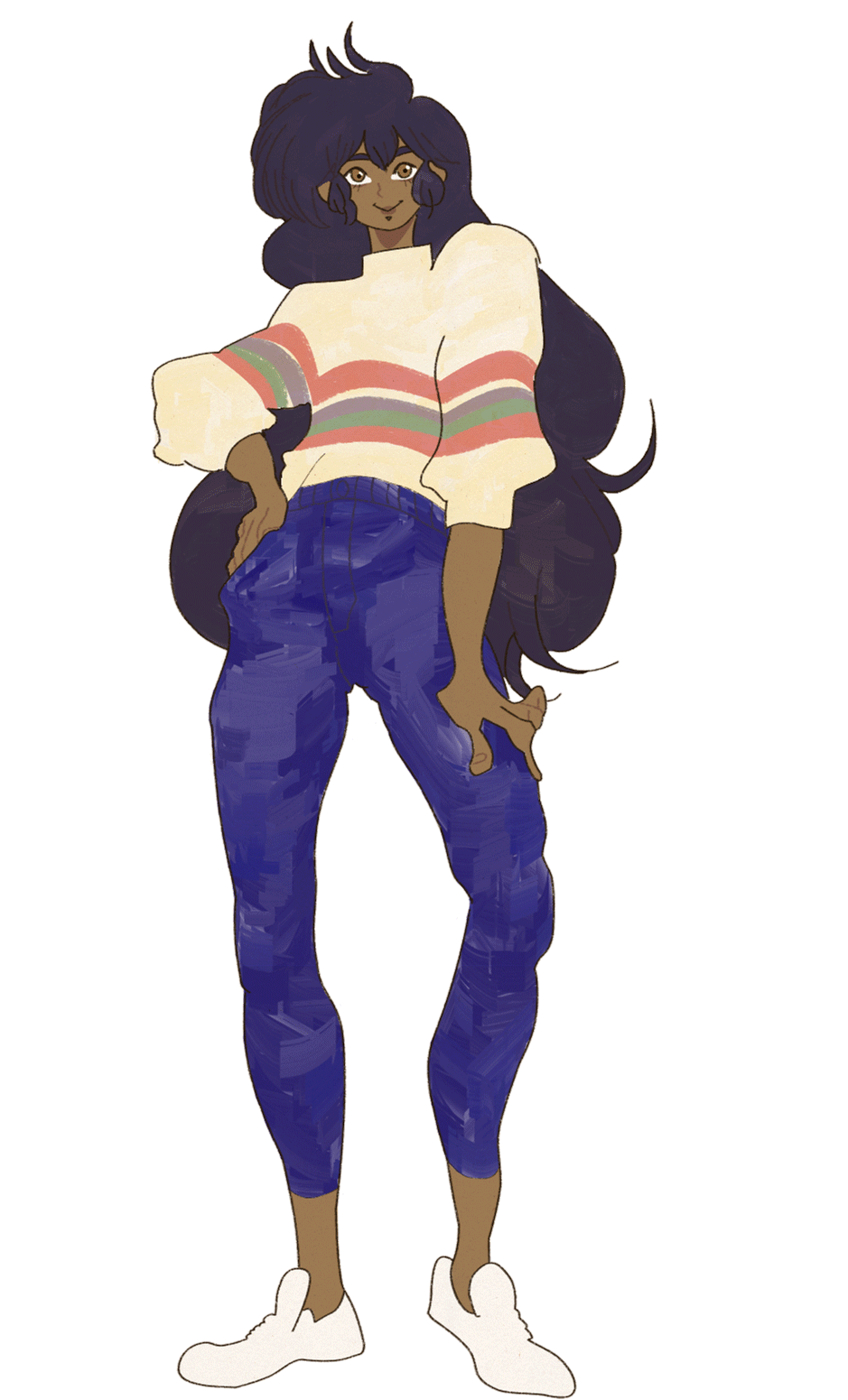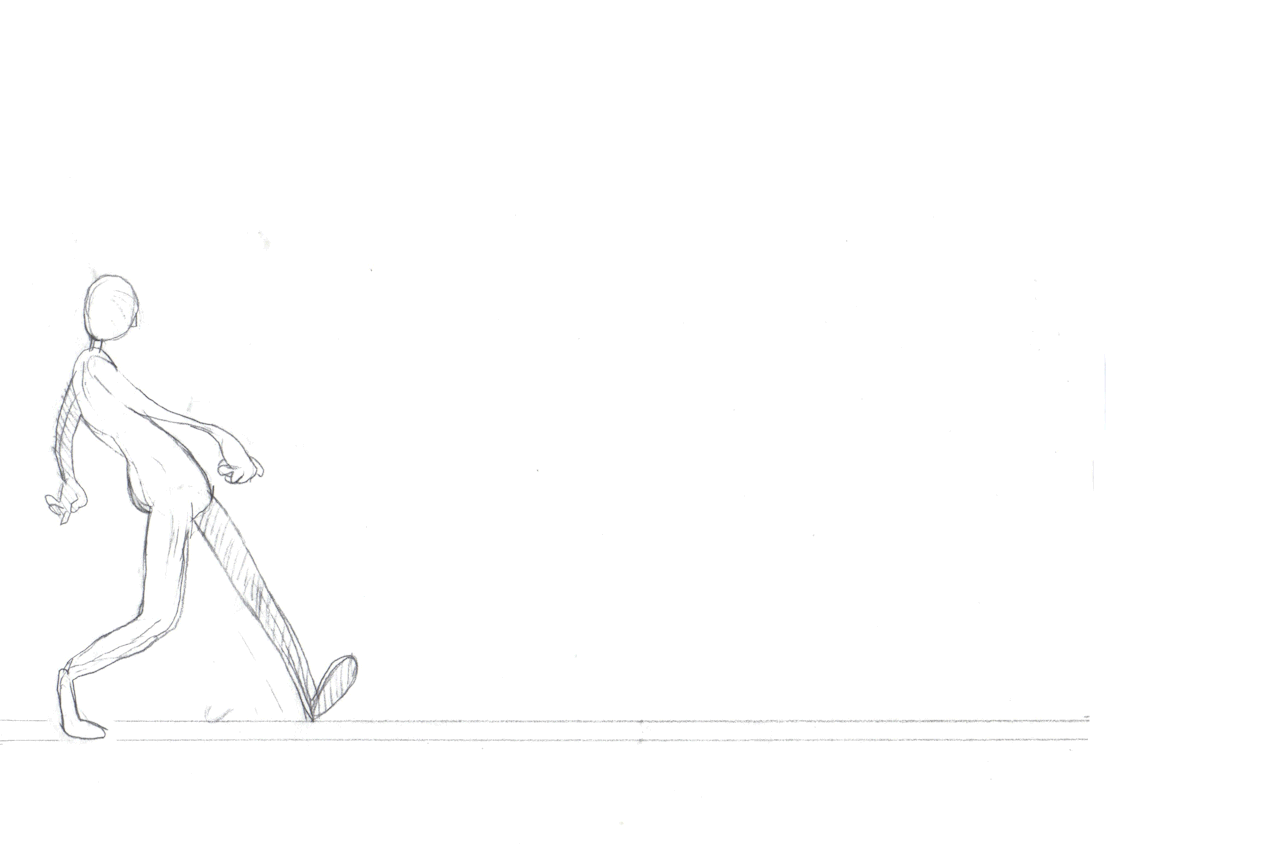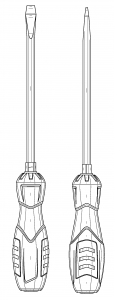This week I made my first ever gifs. Being my first attempt, they are a little low quality. But that’s okay; doing this help me put some the principles I’m learning into practice. The principle that seems the hardest to grasp for me is “inbetweening, the shots between key poses. At first glance it seems like a basic grasp on physics is needed, which is probably true, but after actually drawing it out, I find that “tweening” is more about common sense then physics. Another big factor is spacing.
The first gif seems like a juvenile excuse to show of my drawing and coloring skills (which it is) but I gauging where I stand in displaying weight and solidness in flat 2D drawings. While I think I might’ve failed at it (ie. my drawings look flat), I think adding 1 or 2 inbetweens would add a little more depth, and in turn would look more 3D.

One of my story’s main characters. I’ll be putting up character sheets soon.
The next gif is my very first walk cycle — ever. I broke protocol. Everyone starts with the ball drop — and I probably need to. But due to circumstances, I didn’t have the time so I jumped right in. You know that means? It means it’s all wrong and I need to do it again. And I will. At first glance I can see all my mistakes. At a second, deeper glance, I see all my mistakes. Despite all that, I’m pleased with myself. I mean, walk cycles are scary. And hard. I pity the fools (like me) who pshaw at the walk cycle; “I mean, I walk everyday! How hard can it be?”
How naive.
I won’t bore you with the logistics, but know this: walk cycles are important. There are millions of different walks but every walk has it’s 4 main poses:
the contact

the down

the passing

and the up

And then, of course, the reverse, or the other leg. One walk cycle has 12 poses + 1 last contact, otherwise known as the “Rest” but the Rest can be anything from sitting down to falling over.
A good walk cycle, no matter what kind of walk it is, makes a good character. It’s the first step to actually building a plausible character — cartoony or realistic. So I know, when I master the walk (and run), everything else should be, you know, a piece of cake.
Theoretically, speaking of course.

First walk cycle ever! I tried adding a little personality. I definitely need to add more inbetweens between the down and passing poses.

















